Central projections of intrinsically photosensitive retinal ganglion cells in the macaque monkey
- PMID: 24752373
- PMCID: PMC3996456
- DOI: 10.1002/cne.23588
Central projections of intrinsically photosensitive retinal ganglion cells in the macaque monkey
Abstract
Circadian rhythms generated by the suprachiasmatic nucleus (SCN) are entrained to the environmental light/dark cycle via intrinsically photosensitive retinal ganglion cells (ipRGCs) expressing the photopigment melanopsin and the neuropeptide pituitary adenylate cyclase-activating polypeptide (PACAP). The ipRGCs regulate other nonimage-forming visual functions such as the pupillary light reflex, masking behavior, and light-induced melatonin suppression. To evaluate whether PACAP-immunoreactive retinal projections are useful as a marker for central projection of ipRGCs in the monkey brain, we characterized the occurrence of PACAP in melanopsin-expressing ipRGCs and in the retinal target areas in the brain visualized by the anterograde tracer cholera toxin subunit B (CtB) in combination with PACAP staining. In the retina, PACAP and melanopsin were found to be costored in 99% of melanopsin-expressing cells characterized as inner and outer stratifying melanopsin RGCs. Two macaque monkeys were anesthetized and received a unilateral intravitreal injection of CtB. Bilateral retinal projections containing colocalized CtB and PACAP immunostaining were identified in the SCN, the lateral geniculate complex including the pregeniculate nucleus, the pretectal olivary nucleus, the nucleus of the optic tract, the brachium of the superior colliculus, and the superior colliculus. In conclusion, PACAP-immunoreactive projections with colocalized CtB represent retinal projections of ipRGCs in the macaque monkey, supporting previous retrograde tracer studies demonstrating that melanopsin-containing retinal projections reach areas in the primate brain involved in both image- and nonimage-forming visual processing.
Keywords: LGN; PACAP; PON; RHT; VIP; circadian rhythms; melanopsin; neurotransmitter; suprachiasmatic nucleus.
Copyright © 2014 Wiley Periodicals, Inc.
Figures
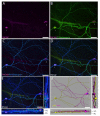

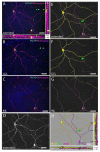
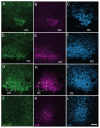
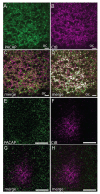

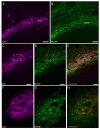



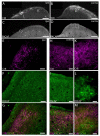
References
-
- Baver SB, Pickard GE, Sollars PJ, Pickard GE. Two types of melanopsin retinal ganglion cell differentially innervate the hypothalamic suprachiasmatic nucleus and the olivary pretectal nucleus. Eur J Neurosci. 2008;27:1763–1770. - PubMed
-
- Berghorn KA, Bonnett JH, Hoffman GE. cFos immunoreactivity is enhanced with biotin amplification. J Histochem Cytochem. 1994;42:1635–1642. - PubMed
-
- Bergström AL, Hannibal J, Hindersson P, Fahrenkrug J. Light-induced phase shift in the Syrian hamster (Mesocricetus auratus)is attenuated by the PACAP receptor antagonist PACAP6-38 or PACAP immunoneutralization. Eur J Neurosci. 2003;9:2552–2562. - PubMed
-
- Berson DM. Strange vision: ganglion cells as circadian photoreceptors. Trends Neurosci. 2003;26:314–320. - PubMed
Publication types
MeSH terms
Substances
Grants and funding
LinkOut - more resources
Full Text Sources
Other Literature Sources
Miscellaneous

